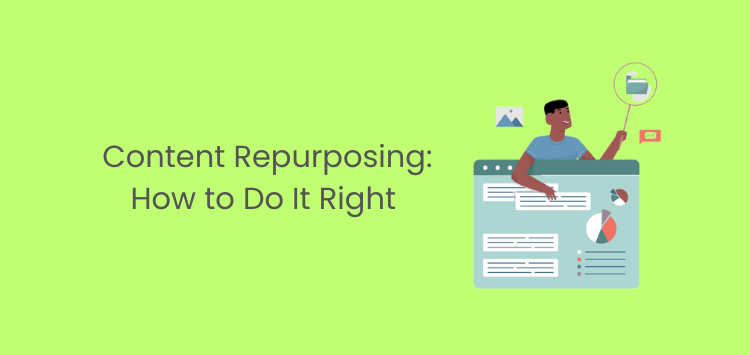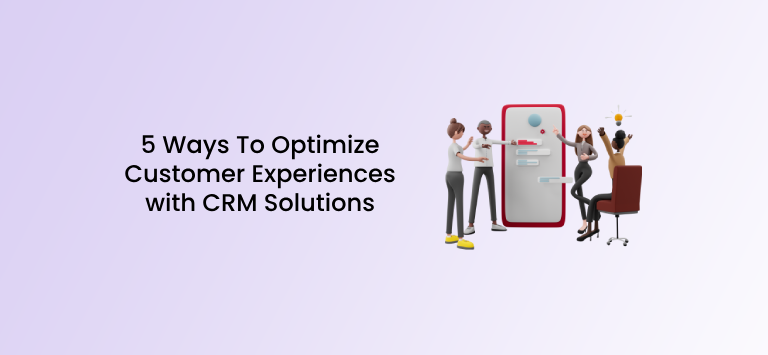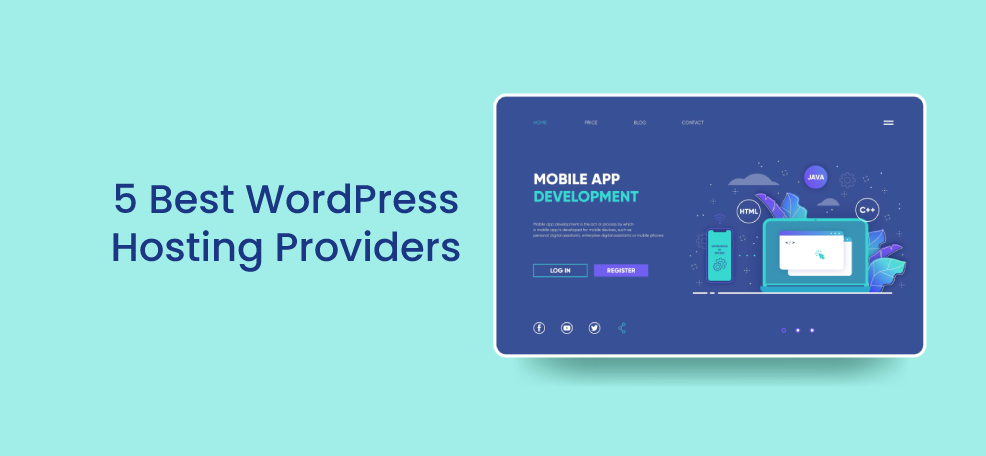The digital world that we exist in has a common problem – attention spans are short and information overload is a constant challenge, making it harder for businesses and content creators must find innovative ways to capture and retain their audience’s attention.
One effective strategy is content repurposing. By repackaging and republishing existing content, you can extend its reach, attract new audiences, and maximize the value of your content investments. If you’ve been wondering how to build an online presence, you don’t have to keep looking.
In this article, we will explore the concept of content repurposing, understand its benefits, and provide practical tips and real-life examples to help you do it right.

Understanding Content Repurposing
Content repurposing is a strategic approach to creating new content by repackaging and republishing existing content in different formats or across various platforms. It involves taking your valuable and relevant content assets and transforming them to reach new audiences, reinforce your brand message, and maximize the return on your content investment.
The concept of content repurposing is rooted in the recognition that not all audiences consume content in the same way. By repurposing your content into different formats, you cater to the preferences of diverse audience segments and increase your chances of capturing their attention.
Benefits of Repurposing Existing Content
1- Repackaging Existing Content
Content repurposing involves repackaging your existing content into new formats or adapting it for different platforms. You can turn a blog post into an infographic, a video tutorial, or a slide deck for a presentation.
By doing so, you can present your content visually appealing and engagingly, so you can cater to different learning styles and preferences.
2- Expanding Reach and Visibility
Repurposing your content allows you to extend its reach and visibility. You can tap into new audiences that might not have come across your original content by leveraging various platforms such as social media, video-sharing websites, or email newsletters.
This reach expansion increases the likelihood of attracting new followers, customers, or subscribers.
3- Enhancing Search Engine Optimization (SEO)
Repurposing content can also have a positive impact on your SEO efforts. Creating multiple versions of your content increases the number of indexed pages on search engines, which can lead to improved organic traffic and a higher probability of your customers using your chat app.
Different formats and platforms also allow targeting specific keywords and optimizing your content for better search engine rankings.
4- Leveraging Existing Assets
Repurposing content allows you to leverage your existing content assets effectively. Rather than starting from scratch every time you need to create new content, you can repurpose and build upon what you already have.
This saves you time, effort, and resources while allowing you to deliver valuable content to your audience through pop-ups, blogs, IG carrousels, etc.
5- Reinforcing Brand Messaging
Repurposing content allows you to reinforce your brand messaging across different platforms and formats. By consistently republishing content that aligns with your brand values, you reinforce your expertise and authority in your industry.
This helps establish your brand as a reliable source of information and fosters a stronger connection with your audience.

How to Repurpose Existing Content
Repurposing existing content is a strategic way to breathe new life into your valuable assets. Here, we will delve deeper into the process of repurposing and explore various strategies to make the most of your existing content.
1- Assessing Your Existing Content
Before diving into repurposing, assessing your existing content library is essential. Conducting a thorough audit allows you to identify content pieces that have performed well, have evergreen potential, or can be adapted into different formats. However, we recommend you consider these aspects when assessing your content.
a. Performance
Analyze your website analytics to identify high-performing content. Look for posts with high traffic, engagement, or conversions. These pieces have already proven their value and can be excellent candidates for repurposing.
b. Relevance
Assess the relevance and timeliness of your content. Some content may have a timeless quality, while others might be time-sensitive. Prioritize evergreen content that remains valuable and useful over an extended period.
c. Format Adaptability
Consider the adaptability of your content to different formats. Is your content suitable for video, audio, visual, or interactive formats? Identify content pieces that can be transformed into other formats without losing their core message or value.
d. Audience Engagement
Evaluate the level of engagement your content receives. Look for content that sparks conversations, generates comments, or prompts user-generated content. These pieces work much more effectively when repurposed to further engage your audience.
2- Choosing Repurposing Strategies
Once you have assessed your content, it’s time to choose the most appropriate repurposing strategies. Here are some effective strategies to consider:
a. Leverage User-Generated Content
User-generated content (UGC) is a powerful resource that allows you to tap into the creativity and enthusiasm of your audience. Encourage your audience to submit content, such as reviews, testimonials, or user-generated videos. You can repost this UGC on your website, add it to your social media platforms, or even incorporate it into your blog posts, creating a sense of community and social proof.
b. Repurpose Evergreen Content
Evergreen content refers to content that remains relevant and valuable over time. Identify evergreen pieces in your content library and update them periodically to ensure accuracy and freshness. By republishing and sharing these pieces, you can attract new audiences and reinforce your expertise in the industry.
c. Repurpose Different Content Formats
Adapt your content into various formats to cater to different audience preferences and consumption habits. You can transform a popular blog post into a visually appealing infographic, a podcast episode, or a video tutorial. By doing so, you can reach audiences who prefer different mediums and increase the visibility and impact of your content.
d. Repurpose for Different Content Types
Tailor your content for different stages of the buyer’s journey or different content types. In this case, you can repurpose a comprehensive guide into a series of blog posts or create a downloadable eBook. By adapting your content to suit different content types, you can nurture leads, provide value at various stages, and engage your audience more effectively.

3- Real-life Examples
In order to illustrate the strategies mentioned above, let’s look at some real-life examples of successful content repurposing.
a. Leverage User-generated Content
A beauty brand can encourage customers to share their makeup looks using a hashtag. The brand will then select the best user-generated photos and create a dedicated gallery on its website, showcasing its customers’ creativity and encouraging others to participate.
b. Repurpose Evergreen Content
Marketing agencies can repost their comprehensive guide on social media advertising as a series of bite-sized infographics. Each infographic can focus on a specific aspect of social media advertising, providing valuable tips and insights that are easy to consume and share on social media platforms.
c. Repurpose Different Content Formats
An entrepreneur can repurpose their popular blog post on “10 Ways to Boost Productivity” into a video tutorial series. Each video could dive deeper into one productivity tip, offering practical examples and demonstrations to help viewers implement the advice effectively.
d. Repurpose for Different Content Types
A software company repurposes its in-depth whitepaper on cybersecurity into a series of blog posts targeting different buyer personas. Each blog post addresses certain industries’ unique cybersecurity concerns and challenges, providing tailored advice and solutions.
By implementing these strategies and learning from real-life examples, you can unlock the potential of your existing content and extend its reach to new audiences. Repurposing content also allows you to amplify your message, engage your audience through different channels, and maximize the value of your content investments.
Tools and Resources for Content Repurposing
1- WordPress Plugins
Use WordPress plugins such as “Revive Old Posts” or “Content Resharer” to automatically share and repurpose your existing content on social media platforms.
2- Canva
This design tool allows you to create visually appealing graphics, infographics, and social media posts to repurpose your content in different formats.
3- Adobe Premiere Pro
Adobe Premiere Pro is powerful video editing software that allows you to repurpose your video content with professional-grade editing features.
Key Takeaways
Content repurposing is a strategic approach to maximize the value and reach of your existing content. You can extend your audience’s engagement and improve your online presence by leveraging user-generated content, repurposing evergreen content, and adapting to different formats and content types.
Remember to plan your repurposing strategy, customize content for each platform, utilize pop-up builders, repurpose across social media channels, and collaborate with influencers. With the right tools and resources, you can repurpose your content effectively and achieve your marketing goals. Start repurposing today and unlock the full potential of your content investments!









